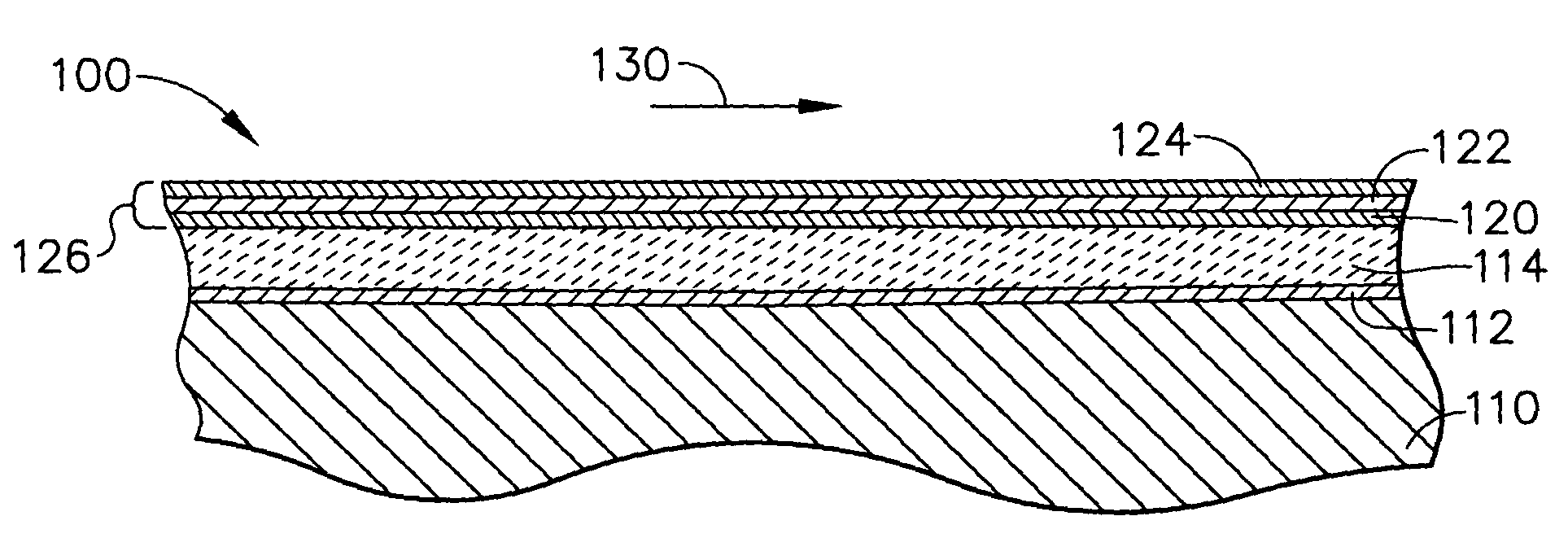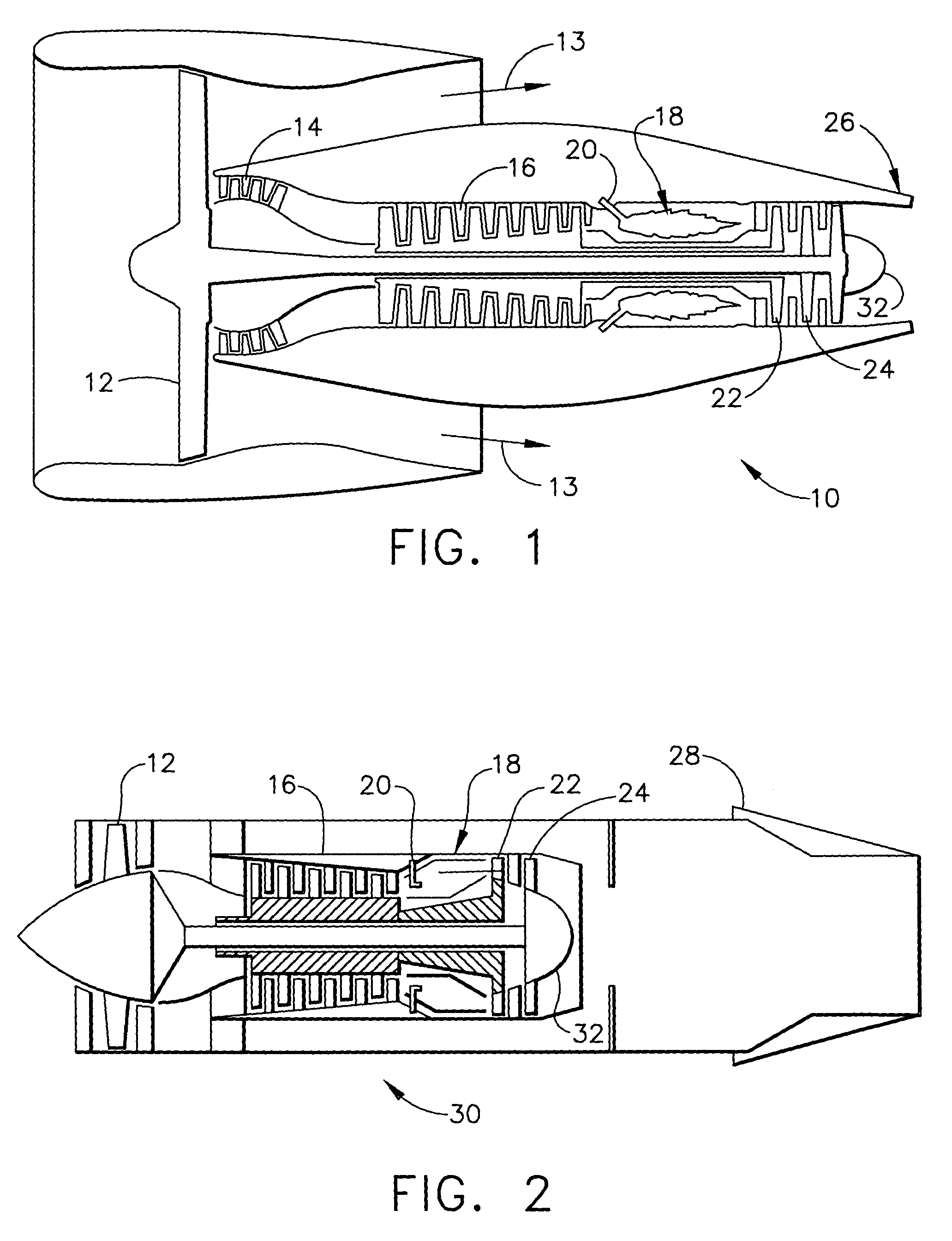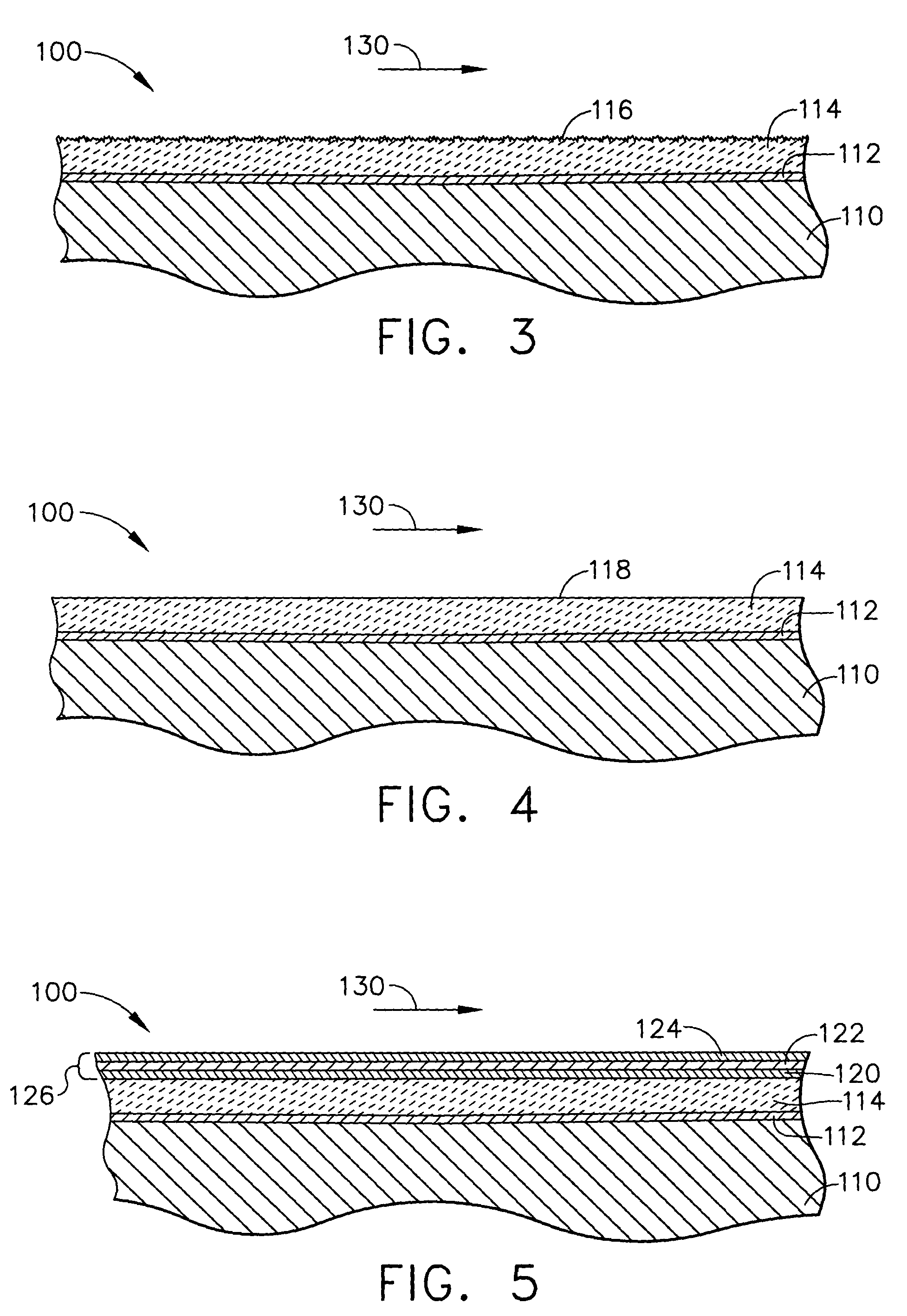Optical reflector for reducing radiation heat transfer to hot engine parts
a technology of radiation heat transfer and optical reflector, which is applied in the direction of magnetic materials, liquid fuel engine components, non-positive displacement fluid engines, etc., can solve the problems of insufficient tbcs, prone to failure, and best superalloy materials that exhibit shortened life due to thermal degradation, so as to reduce the mean time between repair or refurbishment, prolong the component life, and increase engine efficiency
- Summary
- Abstract
- Description
- Claims
- Application Information
AI Technical Summary
Benefits of technology
Problems solved by technology
Method used
Image
Examples
Embodiment Construction
[0024]In accordance with the present invention, hot section components of a gas turbine engine which form the boundary of the gas flow path or which are located in the gas flow path are coated with a specular optical reflective material that has a high temperature capability. The specular reflective system as applied has a smooth surface finish so as to specularly reflect the heat back into the fluid path and away from other hot section components. The specular reflective system includes a sealing layer and a stabilizing layer in addition to the reflective layer.
[0025]A high bypass aircraft gas turbine engine 10 is shown schematically in FIG. 1. During operation, air is forced through the fan 12. A portion of the air bypasses the core of the engine and is used to contribute to the thrust that propels the engine as indicated by arrows 13. The remaining air passes into the core and is compressed in the booster 14 and compressor 16 portions of the engine up to 10–50 times atmospheric p...
PUM
| Property | Measurement | Unit |
|---|---|---|
| thickness | aaaaa | aaaaa |
| thickness | aaaaa | aaaaa |
| thickness | aaaaa | aaaaa |
Abstract
Description
Claims
Application Information
 Login to View More
Login to View More - R&D
- Intellectual Property
- Life Sciences
- Materials
- Tech Scout
- Unparalleled Data Quality
- Higher Quality Content
- 60% Fewer Hallucinations
Browse by: Latest US Patents, China's latest patents, Technical Efficacy Thesaurus, Application Domain, Technology Topic, Popular Technical Reports.
© 2025 PatSnap. All rights reserved.Legal|Privacy policy|Modern Slavery Act Transparency Statement|Sitemap|About US| Contact US: help@patsnap.com



